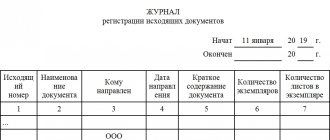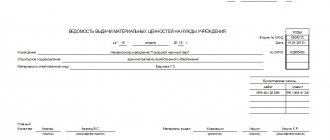Legal basis
When hiring an employee, the employer receives the following personal data from him:
- FULL NAME.;
- registration address and place of residence;
- passport series and number;
- TIN certificate number;
- SNILS;
- about the number of children, their dates of birth;
- about marital status;
- about previous work, terms, reasons for dismissal.
According to Art. 86-90 of the Labor Code of the Russian Federation, the employing organization must adhere to the rules:
- processing personal information of employees;
- storage and use of data;
- transfer of personal data of employees.
Based on the Federal Law “On Personal Data,” employees are given the right to demand protection of information provided to the employer. To ensure proper handling of personal data of employees, each organization develops a Regulation on personal data of employees. This document establishes:
- what information is classified as “personal”;
- who has access to personal information of employees;
- How is personal data stored (on what media);
- in what order the information is processed;
- where information about employees is recorded (are personal files, cards, are lists maintained, etc.);
- on what grounds and to whom employee data can be transferred;
- how is access to data protected (is electronic information encrypted, is a safe installed for physical media);
- the procedure for its approval and amendment.
The application may include sample employee statements:
- consent to the processing of your personal data;
- on consent to receive additional information regarding the employee.
A standard version of such a document, as directed by management, can be developed:
- HR specialist;
- company lawyer;
- assistant manager.
The provision on personal data belongs to the category of local acts of the enterprise. Its structure should not contradict the current legislation of the Russian Federation.
The employer is obliged not only to develop a document regulating the procedure for storing and using information about employees, he must put it into effect. It is for this purpose that the employer draws up an order approving the developed provision.
Contents of the order
The order must include the following elements:
- Introductory part, which will indicate:
- employer's name;
- number, name and date of the order;
- city of origin;
- grounds for the decision.
- The main part, which states:
- the fact of approval of the regulations on the personal data of employees;
- the period from which the provision comes into force;
- an official authorized to work with personal information;
- degree of completeness of access of officials to information.
- The final part, which contains:
- indication of the person responsible for carrying out the order;
- the obligation to bring to the attention of employees the provisions on personal data, to obtain their written consent to the processing of information;
- signature of the manager or duly authorized deputy;
- date of review and signature of the official responsible for implementing the order.
Only after approval of the Regulations on the handling of employee data does it come into force and must be made available to the public against signature. For current employees, the signature is affixed in the familiarization log (register). The corresponding induction clause for new employees is included in the employment contract. It is advisable to draw up a consent to the processing of personal data as a separate document, which must be signed by all employees.
| ATTENTION! The material was updated as of 08/03/2018. Read more here |
ALGORITHM FOR READING THE EMPLOYEE WITH THE ORDER (DIRECTION)
Legal regulation
Regulatory documents governing the topic under consideration:
• Labor Code of the Republic of Belarus (hereinafter referred to as the Labor Code);
• STB 6.38-2004 “Unified documentation systems of the Republic of Belarus. System of organizational and administrative documentation. Requirements for the preparation of documents”, approved by Resolution of the State Committee for Standardization, Metrology and Certification of the Republic of Belarus dated December 21, 2004 No. 69.
| From the editors of "Business-Info" On June 1, 2020, by resolution of the State Committee for Standardization of the Republic of Belarus dated October 26, 2016 No. 83, a new state standard of the Republic of Belarus STB 6.38-2016 “Unified documentation systems of the Republic of Belarus” was approved and put into effect. System of organizational and administrative documentation. Requirements for document preparation"; |
• Guidelines for the practical application of the State Standard of the Republic of Belarus STB 6.38-2004 “Unified documentation systems of the Republic of Belarus. System of organizational and administrative documentation. Requirements for the preparation of documents”, approved by order of the Chairman of the Committee on Archives and Records Management under the Council of Ministers of the Republic of Belarus dated September 16, 2005 No. 41 (hereinafter referred to as the STB Guidelines);
• Instructions for office work in government bodies and other organizations, approved by Resolution of the Ministry of Justice of the Republic of Belarus dated January 19, 2009 No. 4 (hereinafter referred to as the Instructions for office work);
• A unified system of organizational and administrative documentation, approved by order of the Department for Archives and Records Management of the Ministry of Justice of the Republic of Belarus dated May 14, 2007 No. 25 (hereinafter referred to as USORD).
| From the editors of "Business-Info" From November 28, 2020, you should be guided by the unified system of organizational and administrative documentation, approved by order of the Department of Archives and Records Management of the Ministry of Justice of the Republic of Belarus dated November 28, 2019 No. 41. |
The difference between familiarization with an order and agreement with it
The legislation distinguishes between familiarization and obtaining consent. The purpose of familiarization with the order is to bring to the attention of a person (in this case, an employee) a certain accomplished legal fact (hiring, changing working conditions, dismissal, etc.) in order to protect his labor rights (the right to appeal, check the correctness ( legality) of the employer’s actions, etc.).
Giving consent (refusing to give consent) is an action of an employee that expresses his attitude towards the conclusion, change of conditions or termination of an employment contract, as well as individual personnel actions, without which such actions cannot be carried out (and which often precedes familiarization with the order).
Thus, affixing an acquaintance visa to an order by an employee does not deprive the employee of the right to appeal such an order, that is, to express his disagreement with it.
Consequences of failure to read the order
The consequences of failure to familiarize an employee with an order (instruction) (in terms of the possibility of committing a certain personnel action) are most clearly regulated in relation to orders (instructions) on disciplinary action.
| Note! An employee who is not familiar with such an order (instruction) is considered not to have a disciplinary sanction (part six of Article 199 of the Labor Code). From the editors of "Business-Info" From January 28, 2020, you should be guided by Article 199 of the Labor Code as amended by the Law of the Republic of Belarus dated July 18, 2019 No. 219-Z. See comment here . |
In other cases, the consequences for the action taken by the employer are not explicitly stated. Depending on the situation, this may give rise to the recognition of such an action as illegal (for example, upon dismissal).
In any case, for the performer (the employee who is entrusted with the responsibility of conducting familiarization, announcements against signature) this is the basis for applying disciplinary measures for improper performance of job duties that entailed a violation of the rights of employees.
Algorithm for familiarizing an employee with an order (instruction)
| Step 1 | |
| If necessary, reflect in the instructions for (personnel) records management cases when the employee is required to familiarize himself with the order (instruction) | |
| ▼ | |
| Step 2 | |
| Determination of the person responsible for familiarizing the employee with the order (instruction) | |
| ▼ | |
| Step 3 | |
| Determining the category of employees who must be familiarized with the order upon signature, and the period for such familiarization | |
| ▼ | |
| Step 4 | |
| Monitoring the proper execution of familiarization of the employee with the order (instruction) | |
| ▼ | |
| Step 5 | |
| Activation of an employee’s refusal to familiarize himself with an order (instruction) |
Step 1. If necessary, reflect in the instructions for (personnel) records management cases when the employee is required to familiarize himself with the order (instruction)
The current legislation does not contain a list of orders (instructions) that the employer must familiarize the employee with under signature, as well as a general (that is, in relation to all orders) obligation for such familiarization.
For comparison, industry standards may establish rules for familiarization with a signature with a certain category of orders. For example, in paragraph 44 of the Instructions for record keeping in district (city) courts of the Republic of Belarus, approved by order of the Supreme Court of the Republic of Belarus dated October 6, 2014 No. 81, it is stipulated that orders on personnel
are brought to the attention of employees against signature.
The legislation defines the obligation to familiarize only with individual orders.
| For information Documents that the law obliges the employer to familiarize the employee with under signature, see here . |
Step 2. Determining the person responsible for familiarizing the employee with the order (instruction)
The current legislation does not directly define the (official) person who is obliged to familiarize employees with orders on the main activity and (or) on personnel. Noteworthy in this case is clause 6 of the Office Work Instructions, according to which the rights, duties and responsibilities of employees involved in the organization’s office work services are determined by their job descriptions.
In practice, the employer independently determines the categories of specialists and other employees whose responsibilities include familiarization with orders, and establishes these responsibilities in job descriptions, as well as in employment agreements (contracts).
As a rule, the responsibilities for familiarizing the organization’s employees with orders are either assigned to a separate official (for example, a secretary), a separate structural unit (for example, an office, a personnel department), or distributed among various officials (structural units). For example, if in an organization all orders are registered and compiled into files in one structural unit (with one official), then the responsibility for familiarizing the organization’s employees with all orders rests with this unit (person). If orders of various types (varieties) are registered and (or) formed into files in different structural units (with different officials), then the responsibilities for familiarization with the orders are distributed between these units (officials).
At the same time, it is customary to distinguish between the responsibilities for familiarizing workers with documents, which, as a rule, are assigned to workers involved in the clerical services of the organization (employees of the clerical service, personnel department, etc.), and the responsibilities of the executor of the order (as in the meaning of the person who prepared its draft , and in the meaning of the person responsible for its execution).
Fragment of the description of the duty to familiarize yourself with orders in the job description (example)
| Limited Liability Company "Versailles" JOB DESCRIPTION 29.09.2015 № 23 Minsk | APPROVED Director of Versailles LLC Fedorov I.G. Fedorov 09/29/2015 |
HR specialist
<…>
JOB RESPONSIBILITIES
2. The HR specialist performs the following duties:
<…>
2.10. Introduces employees, against signature, to orders (instructions) regarding personnel;
<…>
Step 3. Determining the category of workers who need to be familiarized with the order under signature, and the period for such familiarization
1. The deadline for familiarizing employees with orders is established only for orders on disciplinary sanctions: the employee must be familiarized with the document containing the reasons for the penalty, against signature, within five days (part five of Article 199 of the Labor Code). In other cases, it is customary for orders to indicate the period during which the responsible person should familiarize employees with the order, since untimely familiarization will be an obstacle, for example, to the employee completing the tasks specified in the order.
In some cases, the period for familiarization follows from the nature of the order. For example, the employee’s dismissal order is presented to him against signature no later than the date of dismissal (if this dismissal is a disciplinary measure, then also taking into account the requirements of part five of Article 199 of the Labor Code).
2. Based on the requirements of clause 99 of the Instructions for Office Work, the list of employees who must be familiarized with the order (instruction) is indicated in the order (instruction) as follows:
— if it is necessary to inform all employees of the organization, then the order (instruction) must include the following paragraph: “Order to bring to the attention of all employees”;
- if individual employees, then the list of officials or structural units who are subject to familiarization with the order (instruction) is indicated in the familiarization sheet attached to the draft order (instruction), or is drawn up on the reverse side of the last sheet of such a document. At the same time, the Instructions for Office Work indicate that the administrative document (order, instruction) should not include the clause: “The order should be brought to the attention of...”.
Step 4. Monitoring the proper execution of familiarization of the employee with the order (instruction)
An employee is considered to have familiarized himself with an order (instruction) if he has put a corresponding written mark on it with his own hand. Such a mark must comply with STB 6.38-2004. It is drawn up in the same way regardless of the type of document and is located under the “Signature” attribute or on a separate sheet (clause 50 of the STB Guidelines).
When reading the document, the date of familiarization is indicated, which is located under the transcript of the signature (part nine, paragraph 50 of the STB Guidelines). Thus, according to the STB Guidelines, an acquaintance visa can be issued as follows:
| I have read the order | Signature | E.A. Yaguzhinskaya 01.10.2015 |
Part ten, paragraph 50 of the STB Methodological Guidelines clarifies that, if necessary, the familiarization visa may include the name of the employee’s position. In this case it can be formatted like this:
| The order has been reviewed by: Accountant | Signature | E.A. Yaguzhinskaya 01.10.2015 |
| HR Specialist | Signature | E.A. Petrova 01.10.2015 |
Familiarization visas are placed below the “Signature” detail or on a separate sheet.
If the employee is absent from work, it is customary to send a copy of the order by mail to his home address by registered mail with acknowledgment of receipt, etc.
Step 5. Activating the employee’s refusal to familiarize himself with the order (instruction)
The legislation does not oblige the employee to familiarize himself with the order (instruction) against signature. However, in order to comply with the legal requirements for familiarizing employees with the order (instruction), the employer is obliged to record such a refusal.
As a rule, in such a situation, an act is drawn up (if the employee refuses to familiarize himself with the order of disciplinary action, it is mandatory due to the requirements of part seven of Article 199 of the Labor Code).
When drawing up an act, as an example, you can use the recommended unified form of an act on the employee’s refusal to familiarize himself with the order (instruction) to impose a disciplinary sanction, given in the USORD.
In the act, it is advisable to mention that the order (instruction) was read to the employee, note the employee’s reaction to the order (for example, he reported an unwillingness to sign, disagreed with the order, tore up the order, etc.) and the reasons for refusing to sign. The date of the act should be the date the employee refused to familiarize himself with the order. The employee’s signature on the document is desirable, but in practice it is rarely possible to obtain it. As a rule, the act is signed by those employees who drew it up, as well as by the witnesses who were present when the act was drawn up (more precisely, when the employer takes measures to familiarize the employee with the order (instruction) and the employee refuses to familiarize himself with it (affixing his signature)).
The number of copies in which acts of refusal to familiarize employees with orders are drawn up is determined by the employer independently.
Act on the employee’s refusal to familiarize himself with the dismissal order (example)
Limited Liability Company "Versailles"
ACT
01.10.2015 № 23
Minsk
On refusal to familiarize yourself with the order of dismissal for absenteeism without good reason
| Base: | refusal of the plumber of station No. 2 P.S. Izmailovich to familiarize himself with the order of dismissal for absenteeism without good reason. |
Compiled by the head of the HR department E.I. Kostyukova.
| Present: | 1. HR specialist S.V.Sharendo. 2. Head of section No. 2 V.P. Petrovich. |
Today, 10/01/2015, at 14:15 in the office of the head of the HR department, by me, the head of the HR department E.I. Kostyukova, in the presence of HR specialist S.V. Sharendo, head of section No. 2 V.P. Petrovich, it was proposed to the mechanic - the plumber of site No. 2 P.S. Izmailovich to familiarize himself with the order dated October 1, 2015 No. 13-k on his dismissal for absenteeism without good reason.
P.S. Izmailovich refused to familiarize himself with the order, verbally stating that he did not consider the dismissal to be justified.
| Signature | E.I. Kostyukova |
| Signature | S.V.Sharendo |
| Signature | V.P.Petrovich |
P.S. Izmailovich refused to familiarize himself with this act.
| Signature | E.I. Kostyukova |
| Signature | S.V.Sharendo |
| Signature | V.P.Petrovich |
17.12.2015
Vladimir Samoseiko, lawyer
Errors
Employers make some mistakes when working with the Employee Data Regulations:
- When developing a document, an order for its approval is not drawn up. At the same time, the employer is mistaken in the fact that the development of the Regulation is equivalent to its entry into force or the consent of employees to the collection of personal information. An employer who processes such information without the written consent of the subject may be subject to a fine in the amount of:
- up to 70 thousand rubles (for a legal entity);
- up to 5 thousand rubles (for individual entrepreneurs).
- The document establishes the obligation for the employee to provide information about his state of health, religious or political preferences, which is illegal. The exception is when obtaining such data:
- due to the requirements of legislative acts (for example, when joining the police, prosecutor's office, etc.);
- necessary at the request of regulatory authorities (police, prosecutor’s office, etc.);
- is carried out with the voluntary consent of the employee, provided in writing.
If the Regulations on personal data are not made publicly available, the employer may be held liable under the Code of Administrative Offenses of the Russian Federation in the amount of up to 30 thousand rubles. If held accountable, the employer may punish the employee responsible for collecting and storing information in the workplace (for example, reprimand). If the violation occurs again, the employee concerned may be dismissed.
Document retention periods
In accordance with the Federal Law “On Personal Data,” the employer must store all local acts on the handling of information regarding employees for the entire period of its activities. Thus, along with the Regulations, organizations must always keep an order for its approval.
Order of the Ministry of Culture of Russia dated August 25, 2010 No. 558 establishes that information regarding employees, including personal files, statements, personal cards, is stored for 75 years, and regarding managers - permanently. The results of processing information about the average age, education, and length of service of civil service employees are stored permanently.
Order form
Orders for main activities should be drawn up on the order form of the established form. It is very good if the order form used in the organization is established in your office management instructions. Please see the link below for a sample order form. It includes all the required details, please change only to the details of your organization.
The minimum size of the margins of each sheet of the order on the left, top, bottom is 20 mm, on the right - 10 mm. According to the rules of business correspondence, the letter form has similar dimensions. If the text of the order is large, then they are numbered starting from the second sheet. Moreover, this should be done from the top and in the center.









